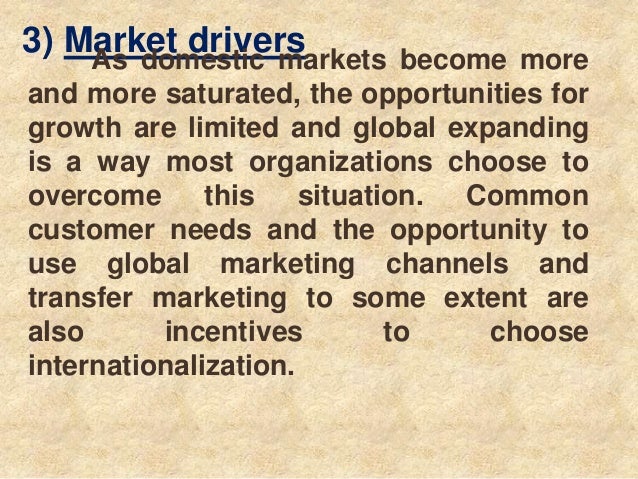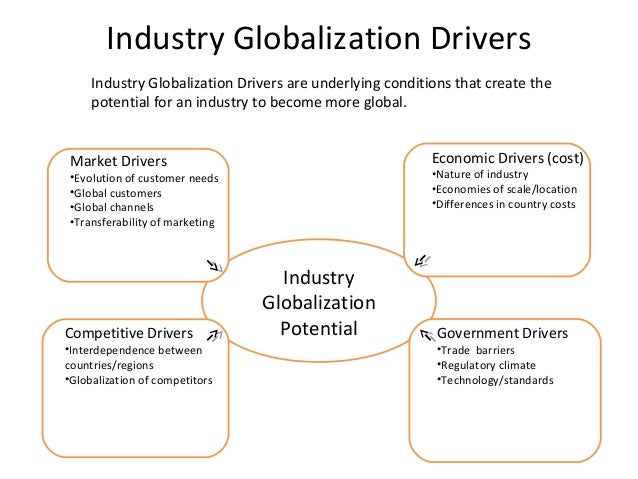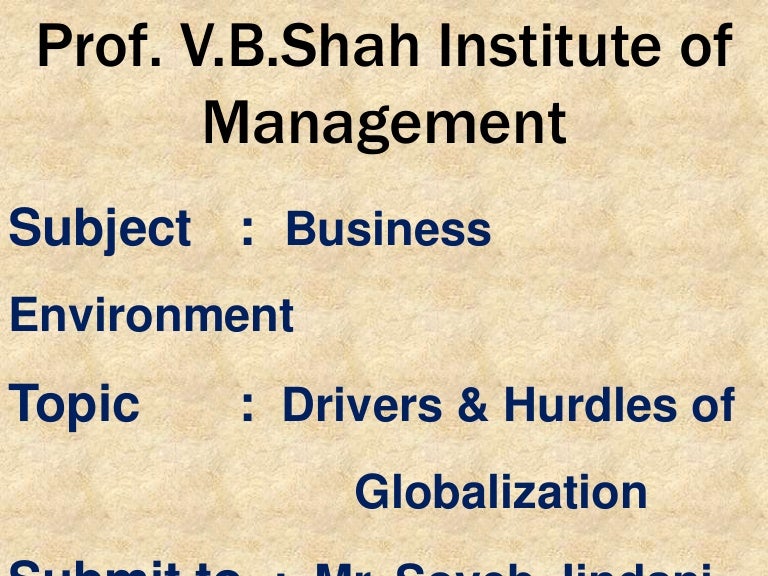Jul 23
- Key Drivers Of Globalization
- Drivers Of Globalization Examples
- Examples Of Cost Drivers In Globalization Definition
Back To Home
Cost Driver
- Examples Of Cost Drivers In Globalization 9/19/2019 Globalization According to the Levin Institute, the term globalization refers to the increasing connections people, companies and states are forming around the world.
- Cost Drivers of Globalization Although price isn't the only factor at play when consumers make purchasing decisions, it certainly plays a critical role. When companies compete on a global playing field, cost drivers are considerably more complex than in smaller, simpler markets.
- The three examples of globalization are the major drivers of globalization. The first is politics, the second is technology, and the third is economics. All three of these have impacts on different.
Drivers of Globalisation. The four main areas of drivers for globalisation are market, government; cost and competition (see Figure 1). These external drivers affect the main conditions for the potential of globalisation across industries, which are mainly uncontrollable by individual firms. (Ferrier, 2004) 4) Cost drivers Sourcing efficiency and costs vary from country to country and global firms can take advantage of this fact. Other cost drivers to globalization are the opportunity to build global scale economies and the high product development costs nowadays.
See Also:
Cost Center
Value Drivers: Building Reliable Systems to Sustain Growth
Direct Labor Variance Formulas
Direct Material Variance Formulas
Step Method Allocation
In accounting, the cost driver definition is a factor that incurs cost. Use cost drivers to allocate variable and indirectcosts to production activities or output. Include both indirect costs and direct costs to compute the full cost of production. Because indirect costs, such as variable overhead, are not directly traceable to production activities, allocate them according to a cost driver rate to apply these costs to production activities. Based on the activity of the cost driver, the cost driver rate is the rate indirect costs applied to production activities.
Download the free Know Your Economics guide to easily manage the factors incurring costs in your company.

Choosing Cost Drivers
An indirect or variable cost may have several possible cost drivers. Traditional costing methods allocate indirect costs to production activities based on volume of output. Conversely, activity-based costing allocates indirect costs to particular production activities related to that cost.
When deciding which driver to use in terms of allocating indirect cost, consider the cause-and-effect relation between the cost and the driver. In addition, consider whether or not the cost driver activity is easily measurable. It is also necessary to consider the cost behavior of the relevant cost. The relevant cost refers to the cost’s response to the activity of the driver. In addition, approximate the relationship between costs and cost drivers using regression analysis.
Use these drivers at differing hierarchical levels. For example, an indirect or variable cost may be relevant at the unit level, the batch level, the product level, the customer level, or the facility level. Once you determine the appropriate hierarchical level, choose a cost driver activity at that level in order to allocate the indirect or variable cost.
Cost Driver Rates
A cost driver rate is the amount of indirect or variable cost assigned to each unit of cost driver activity. For example, you may apply indirect overhead to direct labor hours as $50 dollars per hour. In this case, for each hour of direct labor required for production, the company would then allocate $50 of indirect overheadcosts to the production activities or output.
Cost Driver Examples
For illustrative purposes, below are some cost driver examples of indirect or variable costs as well as relevant cost driver bases for these costs.
Key Drivers Of Globalization
If you want to check if your unit economics are sound, then download your free guide here.
[box]Strategic CFO Lab Member Extra
Access your Projections Execution Plan in SCFO Lab. The step-by-step plan to get ahead of your cash flow.
Click here to access your Execution Plan. Not a Lab Member?
Click hereto learn more about SCFO Labs[/box]
Source:
Hilton, Ronald W., Michael W. Maher, Frank H. Selto. “Cost Management Strategies for Business Decision”, Mcgraw-Hill Irwin, New York, NY, 2008.
 Globalization; Its Drivers and Effects
Globalization; Its Drivers and Effects Globalization, in the most basic sense, can be defined as a trend in which countries across the globe are joining economically. Hill (2009) describes the major facets of globalization to include the globalization of markets and the globalization of production. The globalization of markets is a result of merging local and national markets to create one somewhat homogenous “global” market whereby the individual preferences of regions, or nations, have converged. On the other hand, the globalization of production has allowed firms to split their operations internationally. As a result, each stage of production for these firms takes place in countries around the world in areas where work can be accomplished at the lowest cost. The decrease in international trade and investment barriers and advancements in technology have served as the major drivers of globalization. Furthermore, Hill (2009) identifies that globalization has had an effect on the demographics of the global economy. This paper provides an analysis of the major drivers and effects of globalization and recognizes some of international trade theories that support the need for a global economy.
Globalization, in the most basic sense, can be defined as a trend in which countries across the globe are joining economically. Hill (2009) describes the major facets of globalization to include the globalization of markets and the globalization of production. The globalization of markets is a result of merging local and national markets to create one somewhat homogenous “global” market whereby the individual preferences of regions, or nations, have converged. On the other hand, the globalization of production has allowed firms to split their operations internationally. As a result, each stage of production for these firms takes place in countries around the world in areas where work can be accomplished at the lowest cost. The decrease in international trade and investment barriers and advancements in technology have served as the major drivers of globalization. Furthermore, Hill (2009) identifies that globalization has had an effect on the demographics of the global economy. This paper provides an analysis of the major drivers and effects of globalization and recognizes some of international trade theories that support the need for a global economy.


